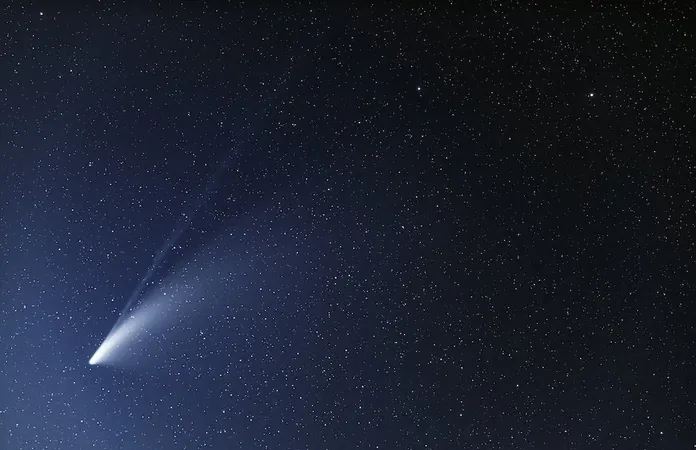
Don't Miss Your Chance to See the Stunning Comet A3 in Metro Vancouver—It's a Once-in-a-Lifetime Event!
2024-10-03
Overview of Comet C/2023 A3
Skywatchers in Metro Vancouver are buzzing with excitement as they prepare to witness the ultra-rare Comet C/2023 A3—a celestial marvel that may not be visible again for tens of thousands of years!
Discovered in early 2023 by the Purple Mountain Observatory in Zijinshan, China, and later confirmed by ATLAS South Africa, Comet A3 is classified as a "long-period" comet. This designation means it takes an astonishing 200 years or more to complete its orbit around the sun. But hold onto your telescopes—scientists believe it is unlikely we’ll have another encounter with Comet A3 for approximately 80,000 years, or it could even be ejected from our Solar System entirely. This is your golden opportunity to catch this magnificent sight!
Origin and Composition
According to Rosanna Tilbrook, an expert astronomer at the H.R. MacMillan Space Centre, Comet C/2023 A3 likely originated from the ancient Oort Cloud. This enigmatic region lies far beyond Pluto and is believed to be filled with icy material dating back to the formation of our solar system, approximately 4.6 billion years ago.
The comet itself is composed of ice, rock, and dust—elements that coalesce to form an icy object encompassed in what scientists affectionately call "dirty snowballs." As it approaches the sun, Comet A3 heats up, releasing dust and gas that creates a spectacular, long tail that can stretch for millions of miles. This is what transforms it into the breathtaking object that lights up our night sky.
When and How to View Comet A3 in Metro Vancouver
While the opportunity to see Comet C/2023 A3 is fleeting, knowing when and where to look is key! Currently, the comet resides close to the eastern horizon, making pre-dawn hours the best time for a glimpse. Good news for night owls: From approximately October 17 onward, you can spot it in the western sky after sunset as it becomes more visible throughout the month.
Mark your calendars—October 12 will be a pivotal date, as the comet will make its closest approach to Earth. However, it will not be visible from Vancouver on that day. Due to its faintness and proximity to the sun, viewers will need binoculars to catch a sight of it now, although visibility is expected to improve as the weeks go by.
“It's definitely worth the effort!” Tilbrook urges. “On average, there’s only one bright comet that graces our night skies every year, so don't let this extraordinary opportunity slip away!”
Additional Astronomical Events
In addition to the comet's appearance, two dazzling meteor showers will also illuminate the night sky in Metro Vancouver, providing even more reasons to get outside and explore the wonders above us!
Get ready, grab your binoculars, and embark on a celestial journey—it’s your chance to see a comet that may never be seen again in your lifetime!









 Brasil (PT)
Brasil (PT)
 Canada (EN)
Canada (EN)
 Chile (ES)
Chile (ES)
 España (ES)
España (ES)
 France (FR)
France (FR)
 Hong Kong (EN)
Hong Kong (EN)
 Italia (IT)
Italia (IT)
 日本 (JA)
日本 (JA)
 Magyarország (HU)
Magyarország (HU)
 Norge (NO)
Norge (NO)
 Polska (PL)
Polska (PL)
 Schweiz (DE)
Schweiz (DE)
 Singapore (EN)
Singapore (EN)
 Sverige (SV)
Sverige (SV)
 Suomi (FI)
Suomi (FI)
 Türkiye (TR)
Türkiye (TR)